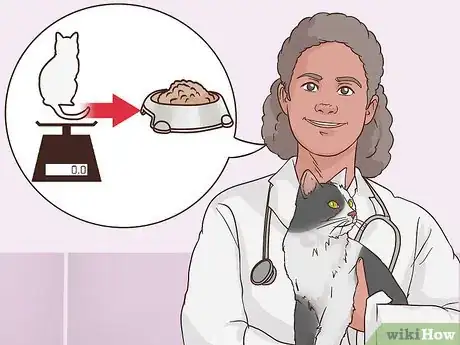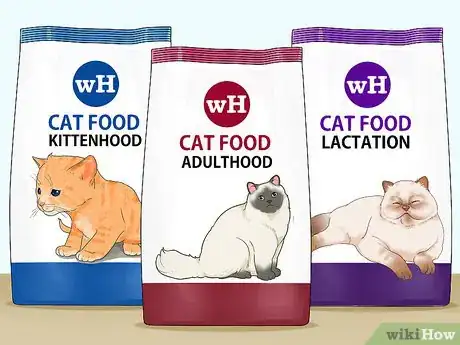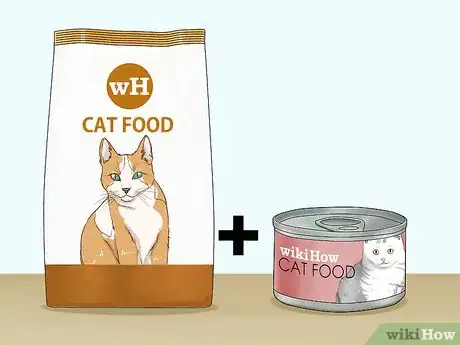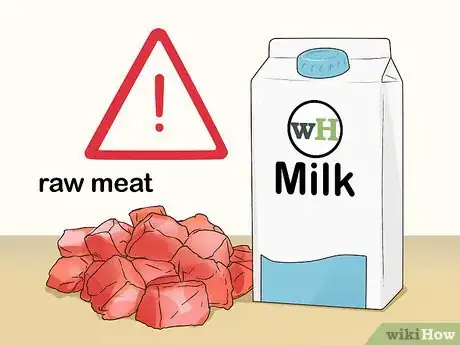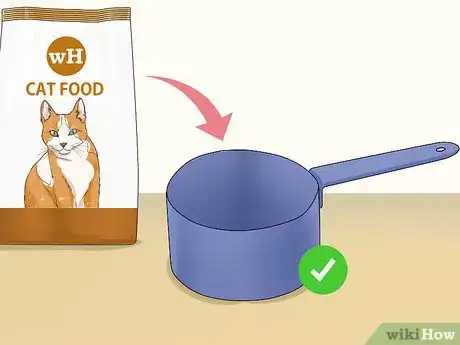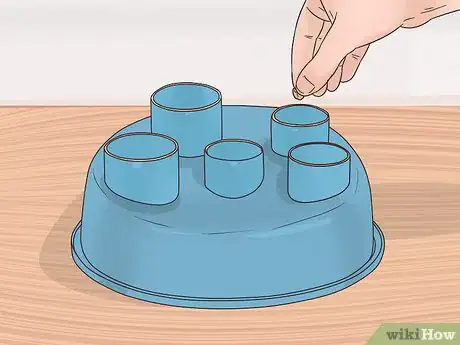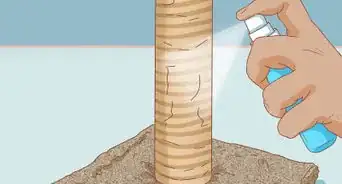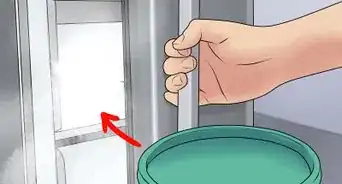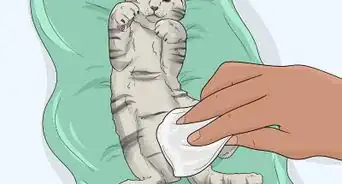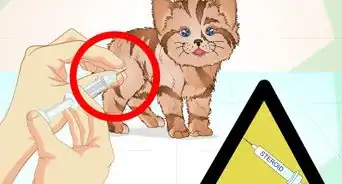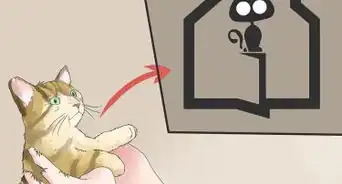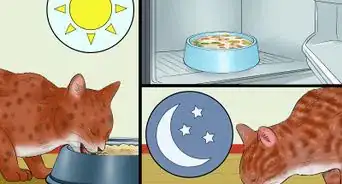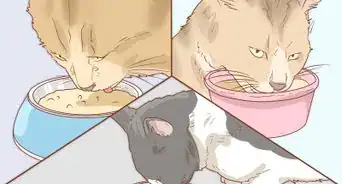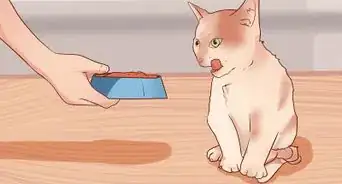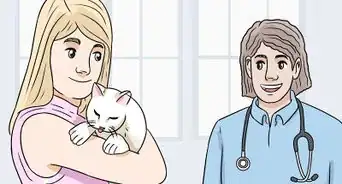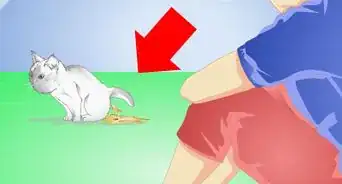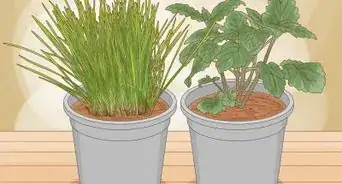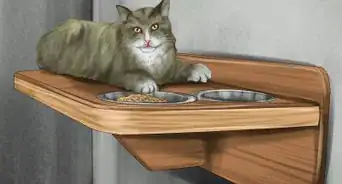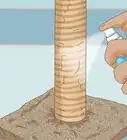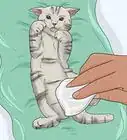This article was co-authored by Pippa Elliott, MRCVS and by wikiHow staff writer, Jessica Gibson. Dr. Elliott, BVMS, MRCVS is a veterinarian with over 30 years of experience in veterinary surgery and companion animal practice. She graduated from the University of Glasgow in 1987 with a degree in veterinary medicine and surgery. She has worked at the same animal clinic in her hometown for over 20 years.
This article has been viewed 16,826 times.
You may not think about how much food your cat eats if you always allow it access to food. Unfortunately, cat obesity is on the rise and it can cause other health problems. To avoid overfeeding your cat, consider changing how much or what your cat eats every day. Work with your veterinarian to ensure that your cat is still getting the nutrients it needs. You can also make simple changes to how you feed your cat. This can help slow your cat down when it eats or make it work for its food.
Steps
Adjusting Your Cat's Diet
-
1Determine how much food your cat needs. The vet should examine your cat to determine its body shape and energy needs. The vet will decide how much food your cat needs based on its ideal body weight. If your cat is overweight, you can discuss how much weight your cat needs to lose and if you need to reduce meal sizes.
- If you can't talk with the vet about your cat's weight, you should read the cat food package to determine the correct portion size for your cat based on age and weight.
- Keep in mind that some feeding recommendations on pet food are overgenerous. If your cat is overweight, then feed them the amount for the weight you want them to be rather than the amount for their current weight.
-
2Select the right food for your cat's age and lifestyle. While most commercial cat foods are developed to give balanced nutrition, they're made for different stages of your cat's life. Choose a cat food that says it meets all the health requirements established by the Association of American Feed Control Officials (AAFCO) and pick one based on your cat's life stage. Examples of ages and activity levels include:
- Kitten
- Adult
- Senior
- Pregnancy and lactation
Advertisement -
3Feed your cat a mix of wet and dry food. If you'd like to change the commercial cat food you give your pet, ask for recommendations from the vet. They may recommend that you add some wet food to your cat's diet if you're currently only feeding dry food. If you'd like to feed your cat a mix of wet and dry food, avoid just adding the wet food. You'll need to reduce the amount of dry food you offer, so your cat doesn't overeat.[1]
- Your cat needs about 24 to 35 calories for each pound it weighs, so take this into account when deciding what foods to offer.
-
4Limit the treats you give your cat. It's important to pay attention to all of the food you're feeding your cat, including treats. Treats are fine to occasionally give to your cat, but they shouldn't make up more than 10 to 15% of your cat's overall diet. To keep your cat a healthy weight, avoid giving these treats:
- Raw meat
- Milk
- Food scraps
Changing Feeding Habits
-
1Feed your cat several small meals during the day. If your cat always has access to food in its dish, it can easily overeat. Instead of allowing your cat to graze, feed your cat at set meal times. If you have an adult cat, feed the cat a few small meals during the day.[2]
- If you have a kitten, you may need to give it three smaller meals each day.
-
2Measure your cat's food for the day. If you're feeding your cat several small meals a day or if you're feeding several cats, it may be hard to remember how much food you've already given them during the day. To prevent overfeeding your cat, measure out how much food you want to give your cat for the whole day.[3]
- Remember that the exact amount of food you measure out will depend on your cat’s needs.
-
3Divide the daily food into several portions. Place the daily amount of food into a smaller container that you can divide up at meal and snack times. For example, if your cat can have one cup of cat food in a day, but you like to divide it into a few meals and a treat, start by measuring out one cup of food into a container. You could give your cat a little over 1/3 of a cup of the food for each meal and have some leftover for treats.[4]
- If you have multiple cats, keep separate containers for each cat, since they may have different dietary needs.
-
4Use measuring cups or a food scale to portion the food. If you're in the habit of pouring food out of the bag into your cat's food bowl, start measuring the food with a cup or weighing the food on a food scale. This will ensure that you're giving your cat the recommended amount of food. Measure the food into the cup and brush the excess food off of the top, so the cup of food is level, not heaping. Or, if you have a food scale, then place the food on the scale to find the exact amount.
- Using a scale is much more accurate because food can settle differently in a measuring cup from day to day, but the scale will always ensure that your cat is getting the same amount of food.
- If your cat's food bowl has measurement lines on the side, you should still fill a separate measuring up and pour the food in. It's very easy to overfill the dish when you're pouring into it.
-
5Give your cat access to clean water. You should always have fresh water available for your cat. Drinking plenty of water throughout the day will help your cat digest its food and can help it feel fuller. Remember to wash your cat's water dish frequently.
- If your cat eats dry food, it's even more important to offer lots of dry water. This is because dry cat food doesn't contain very much moisture.
-
6Put the food in a puzzle or cat toy. One of the best ways to keep your cat a healthy weight is to keep your cat active. Instead of setting treats at set times, challenge your cat by putting the treat into a food puzzle or cat toy. Your cat will spend time and energy to get to the food.
- This will also slow your cat down when it eats, since the cat will probably only be able to get a few pieces of treat at a time.
References
About This Article
You can avoid overfeeding your cat by giving it several small meals throughout the day rather than one, which will prevent it from becoming too hungry and overeating. You should also measure out each of your cat’s meals so you don’t accidentally give it too much food. Besides portioning its meals correctly, it’s also important to feed your cat food that’s made specifically for its age and lifestyle so it gets the right nutrients for its body. Additionally, make sure you’re not giving your cat too many treats, as this can cause it to gain weight. To learn how to mix wet and dry food for your cat to help it stay healthy, read more from our Veterinary co-author.
